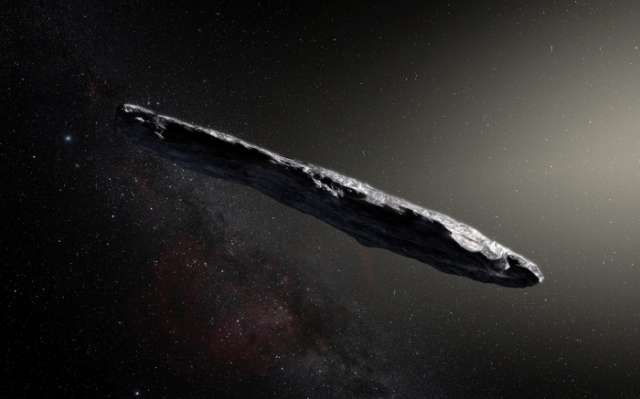The first interstellar object from another solar system has been observed speeding past Earth

It's also unlike any other asteroid we've seen before. Astronomers have trained a flurry of telescopes on the object discovered last month, and now we're being rewarded with super-exciting details.
'Oumuamua (official designation 1I/2017 U1 - the "I" is for "interstellar") was first spotted by the Pan-STARRS 1 telescope in Hawaii in late October, and it didn't take long for astrophysicists to figure out that its trajectory and velocity both indicated that it was an extrasolar stranger, perhaps flung out by a neighbouring star.
But there was something odd about it. Preliminary observations suggested it was a comet — but follow-up observations showed none of the characteristics associated with comets, and it was subsequently categorised as an asteroid: The first time a comet's categorisation has changed to asteroid.
But that's not the only unusual thing about 'Oumuamua. Initial calculations showed that the asteroid came from the direction of the star Vega, in the constellation of Lyra.
However, even travelling at an incredible speed of 95,000 kilometres per hour (59,000 miles per hour), it would have taken 300,000 years to reach Earth from Vega — and Vega wasn't in the same place 300,000 years ago.
This suggests that 'Oumuamua could have been travelling through space, unattached to any star system, for hundreds of millions of years.
"For decades we've theorised that such interstellar objects are out there, and now — for the first time — we have direct evidence they exist," said astrophysicist Thomas Zurbuchen from NASA.
"This history-making discovery is opening a new window to study formation of solar systems beyond our own."
When 'Oumuamua was discovered, telescopes around the world set to make observations. Gemini, the ESO's Very Large Telescope in Chile, the Canada France Hawaii Telescope, the United Kingdom Infrared Telescope, and other observatories trained their eyes on the asteroid.
Combining images from the various telescopes, an international team found that the asteroid varies in brightness by a factor of about 10 every 7.3 hours, matching its spin about its axis. No other comet or asteroid in the Solar System varies so widely in brightness.
"This unusually big variation in brightness means that the object is highly elongated: about ten times as long as it is wide, with a complex, convoluted shape," said Karen Meech from the Institute for Astronomy in Hawaii.
"We also found that it had a reddish color, similar to objects in the outer Solar System, and confirmed that it is completely inert, without the faintest hint of dust around it."
This implies that the asteroid is made of dense material — rock and possibly metal — and has no water or ice. The redness of the surface was probably caused by cosmic irradiation over the hundreds of millions of years it has been travelling the Milky Way galaxy.
'Oumuamua slingshotted around the Sun on 9 September at a speed of 315,000 kilometres per hour (196,000 miles per hour), and is now travelling out of the Solar System. As of 20 November, its speed was 138,000 kilometres per hour (85,700 miles per hour).
It is due to pass Jupiter's orbit in May 2018, and Saturn's in January 2019. Scientists will continue taking observations until 'Oumuamua is too faint to see.
The original article was published in Business Insider.















































